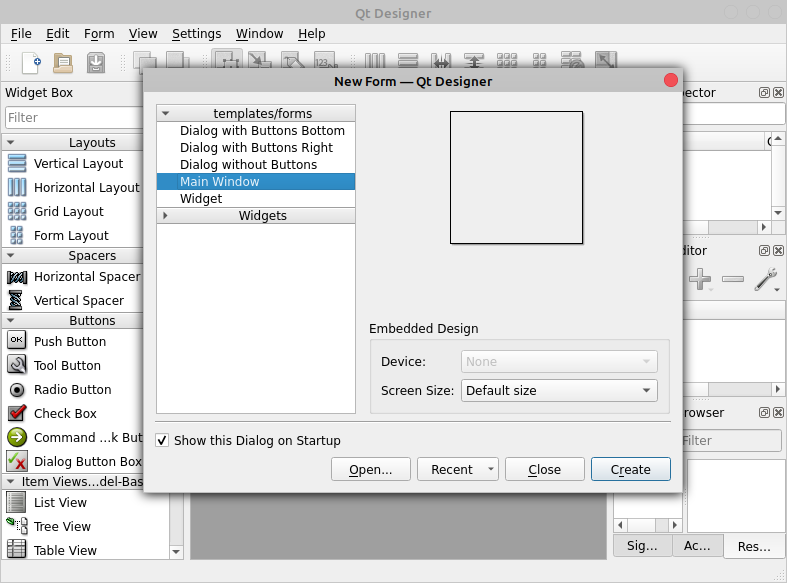
Qt Free Qt Foundation
The QT interval is the time from the beginning of the QRS complex, representing ventricular depolarization, to the end of the T wave, resulting from ventricular repolarization.Long QT syndrome (LQTS) is a disorder of the heart's electrical activity. The Foundation has license agreements with The Qt Company, Digia and Nokia.The agreements ensure that the Qt will continue to be available as Free Software.Qt is used for developing graphical user interfaces (GUIs) and multi-platform applications that run on all major desktop platforms and most mobile or embedded platforms.QT Interval. The KDE Free Qt Foundation is an organization with the purpose of securing the availability of the Qt toolkit for the development of Free Software and in particular for the development of KDE software.
An example of such a non-GUI program using Qt is the Cutelyst web framework. Non-GUI programs can also be developed, such as command-line tools and consoles for servers. Most GUI programs created with Qt have a native-looking interface, in which case Qt is classified as a widget toolkit. People who have LQTS also can have arrhythmias. Arrhythmias are problems with the rate or rhythm of the heartbeat.
DDE ( Deepin Desktop Environment) of Linux Deepin Cutefish, a desktop environment built on Qt/KDE Frameworks KDE Plasma, a libre desktop environment for various computing devices With Qt Quick, rapid application development for mobile devices became possible, while logic can still be written with native code as well to achieve the best possible performance.Other features include SQL database access, XML parsing, JSON parsing, thread management and network support.Graphical user-interfaces and desktop environments that utilize Qt/QML as widget toolkit: Qt also provides Qt Quick, that includes a declarative scripting language called QML that allows using JavaScript to provide the logic.
Lomiri (formerly Unity8), a convergent desktop environment started by Canonical, maintained by Ubports Lumina, a desktop environment designed for BSD-based TrueOS LXQt (Lightweight X11 Desktop Environment)
SDDM, a display manager that is X11 and Wayland compatible written in QML. LiriOS, a workspace shell built with Qt/QML Liquidshell, a shell based on QtWidgets Be-shell, a simple shell based on KDE Frameworks NX-Desktop, a desktop-shell based on Plasma Trinity DE, a continuously developed fork based on KDE3
Sailfish OS, a mobile operating system developed by Jolla Cutie Shell, a new Sailfish-inspired mobile UI Blackberry 10, a touchscreen-based mobile OS by Blackberry Ltd. Avionics, Panasonic's in-flight entertainment system AsteroidOS, an open source operating system designed for smartwatches theShell, a desktop shell written in Qt
JingOS, a touch-friendly UI for tablets Lomiri, formerly known as Unity8, a phone UI developed by Ubports, originally by Canonical LuneOS, community-driven successor for Palm/HP webOS Plasma Mobile, a touch-based GUI developed by KDE
Qt Driver Tool Application
Audacious, a music player for Linux, Microsoft Windows, and other Unix-like operating systems. AMD's Radeon Software Crimson Edition driver tool application. 010 Editor, a commercial hex editor and text editor for Microsoft Windows, Linux and macOS. Ultrahaptics, haptic interface developer for a wide range of applications Qtopia, a system by Nokia for embedded and mobile devices Sky Q, the home entertainment system of Sky plc

Musescore, an open-source, multiplatform notation software Moonlight Stream, an open-source implementation of Nvidia Shield Mathematica, a mathematical symbolic computation program, sometimes termed a computer algebra system or program, used in many scientific, engineering, mathematical, and computing fields. LMMS, a cross-platform music production software Krita graphics editing and digital painting software Heimer, an open-source mind map, diagram, and note-taking tool
Qtractor Audio multitrack recorder and editing software QGIS geographic information system qBittorrent cross-platform free and open-source BitTorrent client

Recent versions of Qt use the native style APIs of the different platforms, on platforms that have a native widget set, to query metrics and draw most controls, and do not suffer from such issues as often. This made the porting work easier because very few classes in Qt really depended on the target platform however, this occasionally led to slight discrepancies where that emulation was imperfect. VirtualBox OS virtualization software Qt is utilized by a wide range of companies and organizations such asExample of Qt usage in Linux-based systems Qt concepts Complete abstraction of the GUI When first released, Qt used its own paint engine and controls, emulating the look of the different platforms it runs on when it drew its widgets.
Metaobject compiler The metaobject compiler, termed moc, is a tool that is run on the sources of a Qt program. The concept is that GUI widgets can send signals containing event information which can be received by other controls using special functions known as slots. Signals and slots A language construct introduced in Qt for communication between objects which makes it easy to implement the observer pattern while avoiding boilerplate code. Some other portable graphical toolkits have made different design decisions for example, wxWidgets uses the toolkits of the target platform for its implementations.
Qt is now split into essential and add-on modules. With Qt 5.0 the architecture was modularized even further. Qt modules Starting with Qt 4.0 the framework was split into individual modules. The Ring programming language includes Qt in the standard library. Language bindings Qt can be used in several programming languages other than C++, such as Python, Javascript, C# and Rust via language bindings many languages have bindings for Qt 5 and bindings for Qt 4. This meta information is used by Qt to provide programming features not available natively in C++: signals and slots, introspection and asynchronous function calls.
Complete with support for TCP, UDP, HTTP, TLS, SSL (in Qt 4) and SPDY (since Qt 5.3). Was split off from QtGui in Qt 5.The module for GUI application written using QML2.Widget like controls for Qt Quick intended mainly for desktop applications.Network abstraction layer. In Qt 5 this module now depends on OpenGL, but no longer contains any widget classes.Contains classes for classic widget based GUI applications and the QSceneGraph classes.


 0 kommentar(er)
0 kommentar(er)
